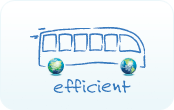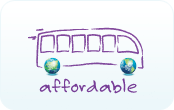|
14 December 2012 – India’s economy is growing very strong again and the design and development of buses and coaches has gone through a period of rapid evolution. India invested very heavily in highways linking all the main centres of population. Popularly known as the Golden Quadrilateral, they help to greatly reduce journey times for passengers and freight. There has also been a rapid increase in the numbers of professional middle-class people, some of them preferring to live in communities outside the cities, thus creating demand for commuter services.
The size of this growing market has tempted some of the main European manufacturers to establish subsidiaries and joint ventures in India, which has stimulated the whole of the manufacturing industry and led to the development of new and more powerful vehicles with many enhancements for safety and comfort.
India has adopted regulations on the construction and use of buses and coaches which are closely derived from the European Bus Directive. These apply to new vehicles therefore it will take several years for old and noncompliant vehicles to be taken out of service.
It is estimated that the population of India is nearly 1.2 billion. Although sales of cars are rising, a high percentage of the population is still dependent on buses for city, suburban and rural mobility services. The expansion of the highway network has also led to a rapid increase in the number of intercity express coach journeys.
The fifth Busworld India, on the theme “Gearing-up for a sustainable public transportation system, focused on fuel efficiency, ITS and hybridisation”,will take place from 1 to 3 February 2013 in Mumbai and will showcase the latest developments in the Indian bus industry. A great opportunity to take the pulse of the Indian industry and to see all the latest innovations in vehicles and components.
|














